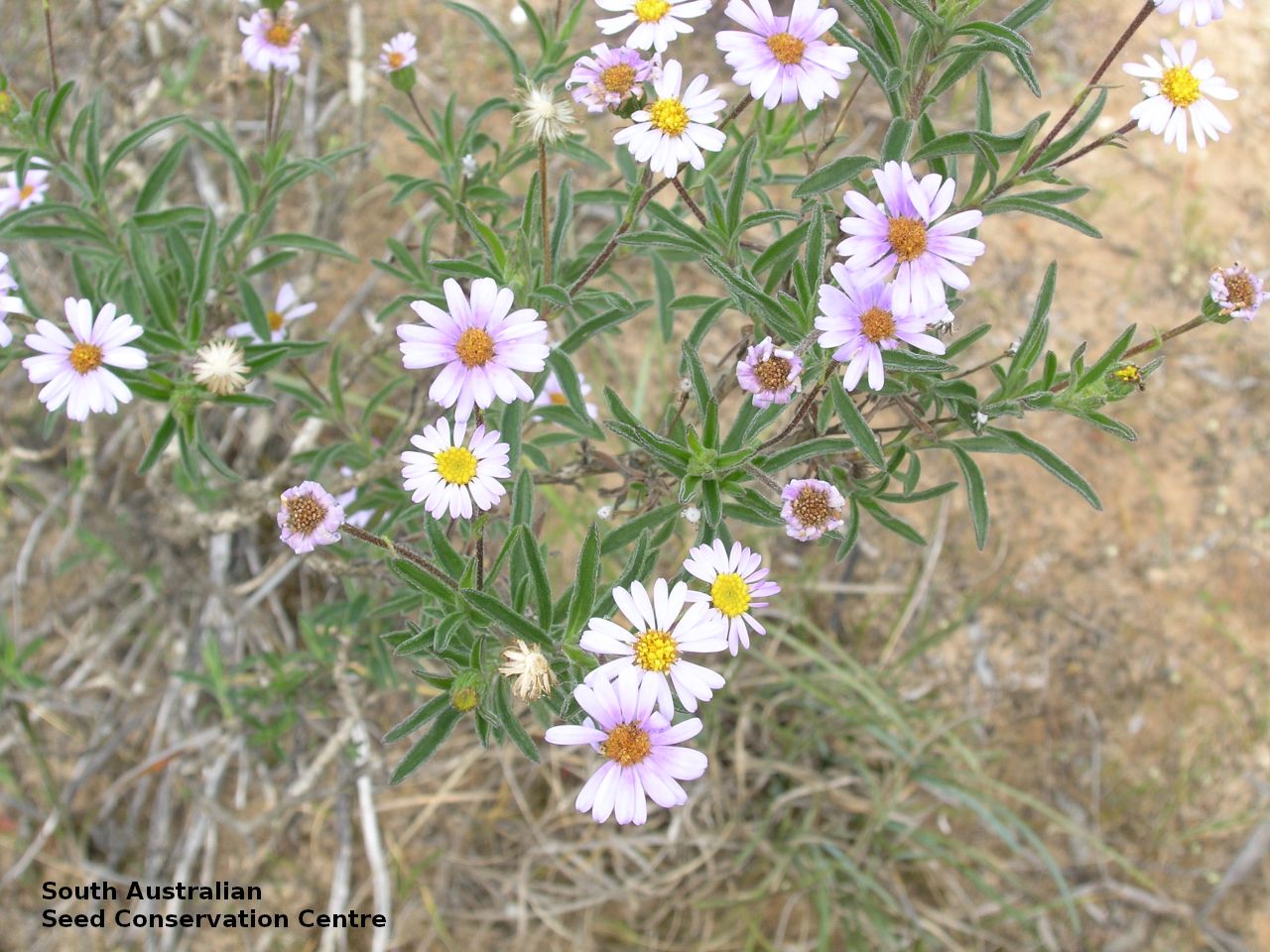
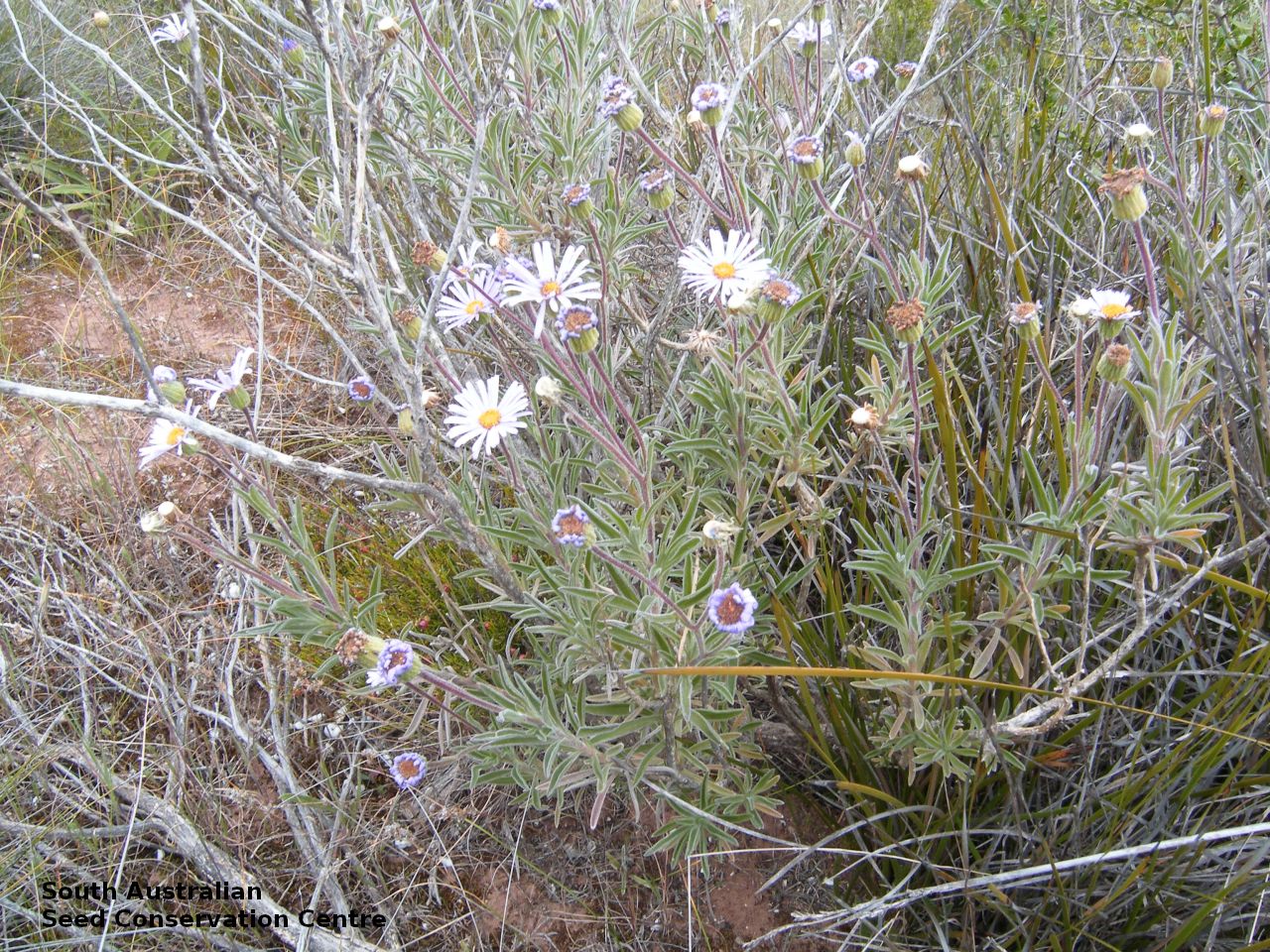
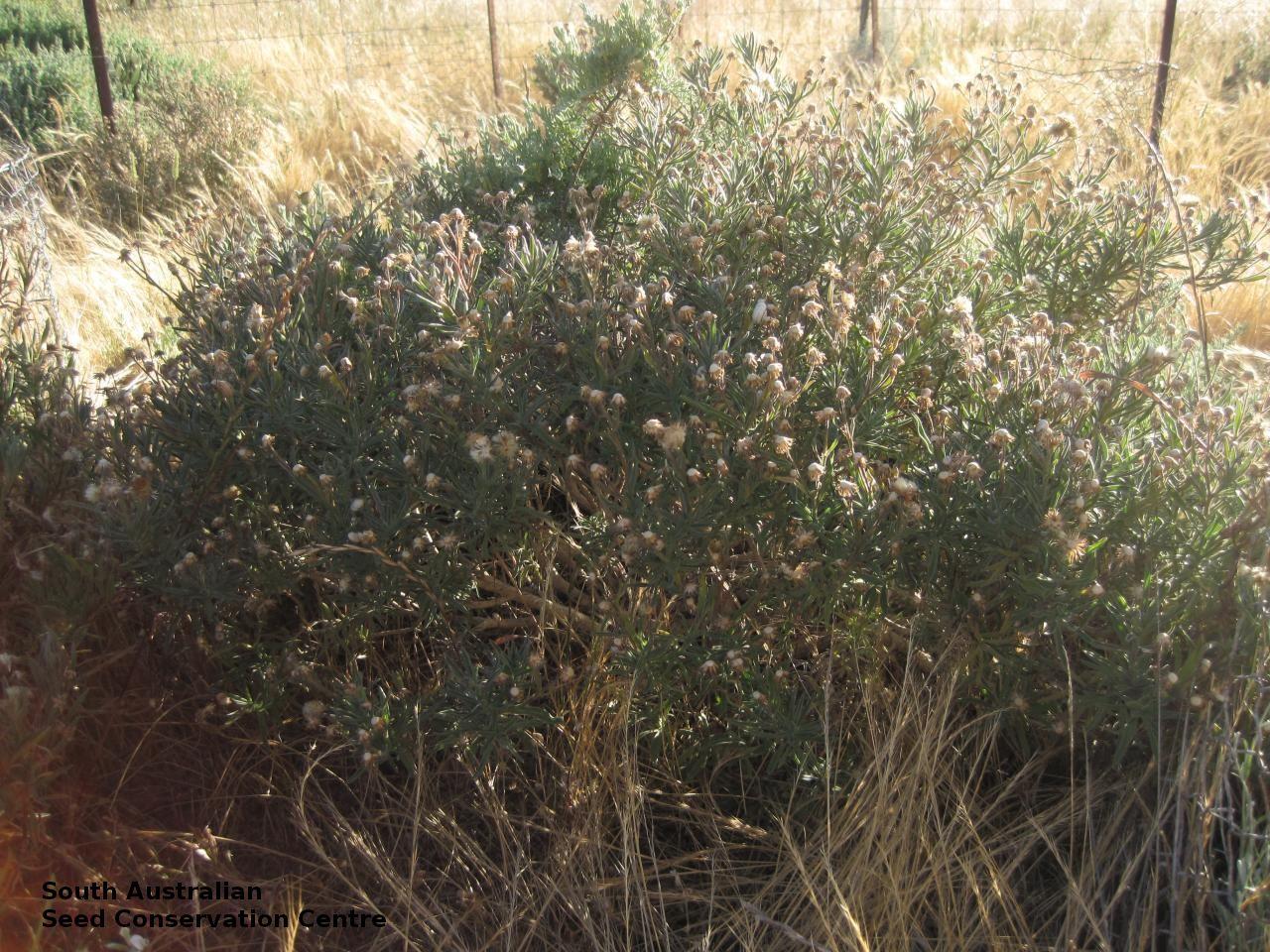
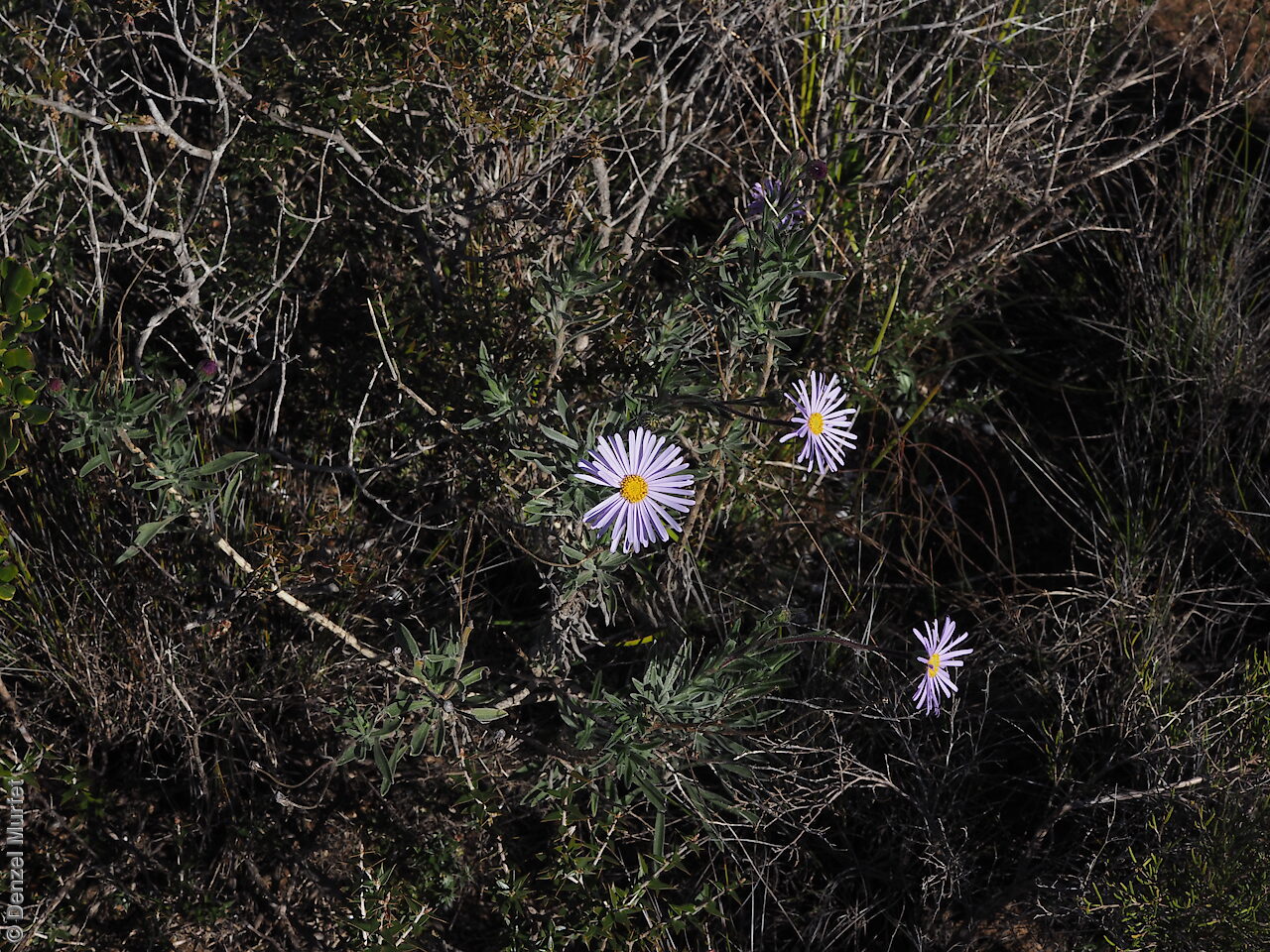
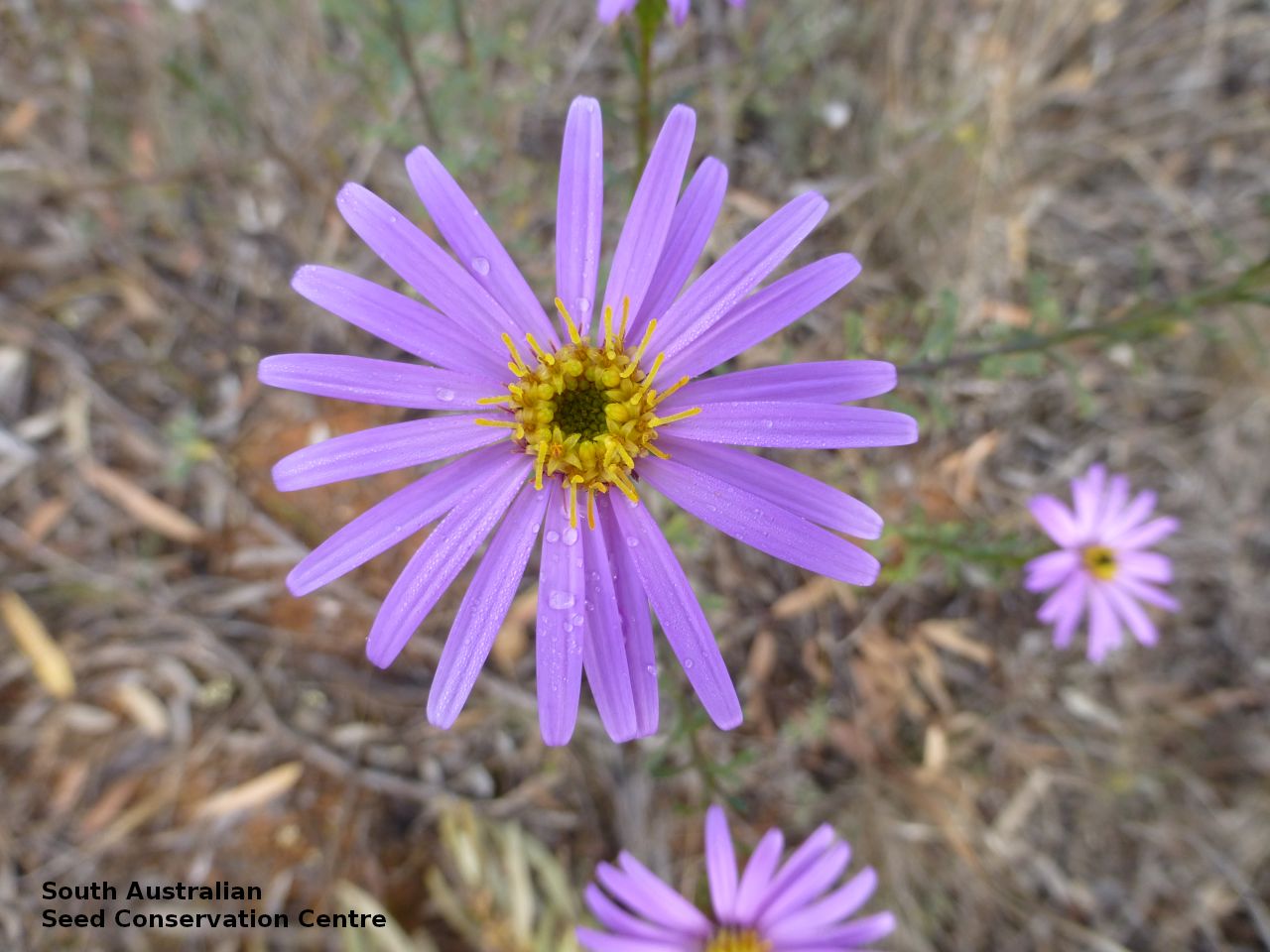
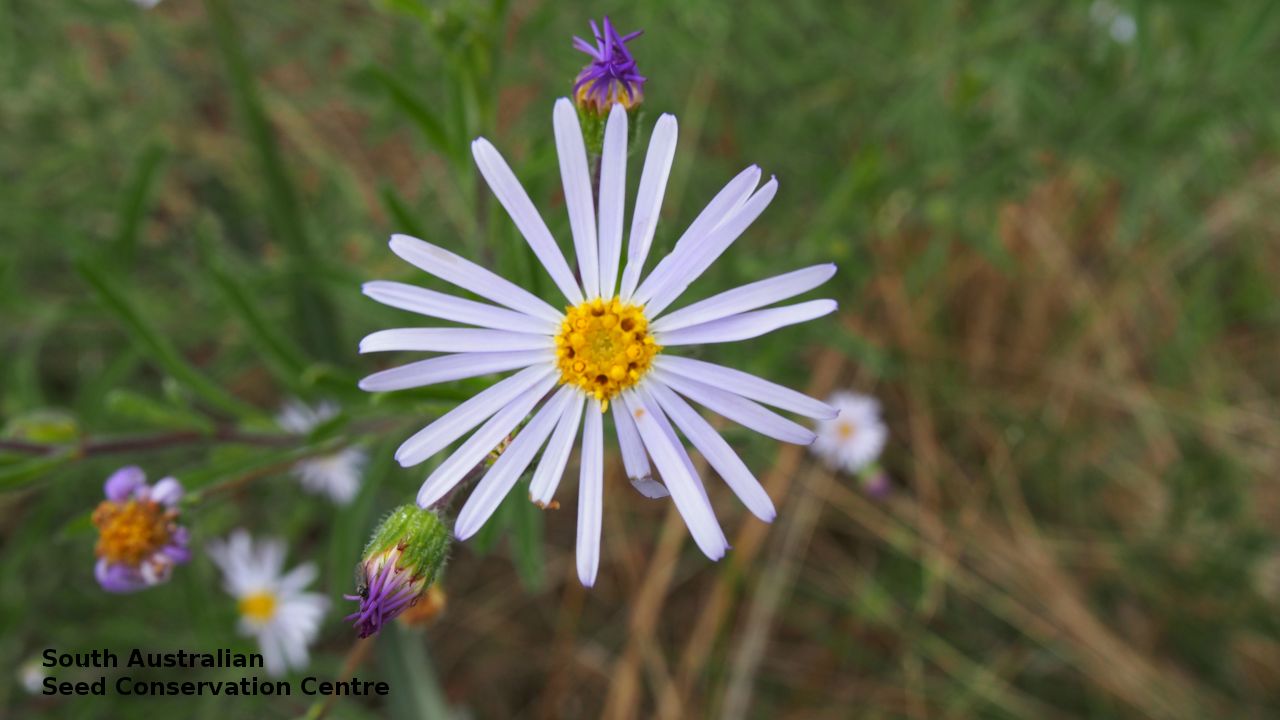
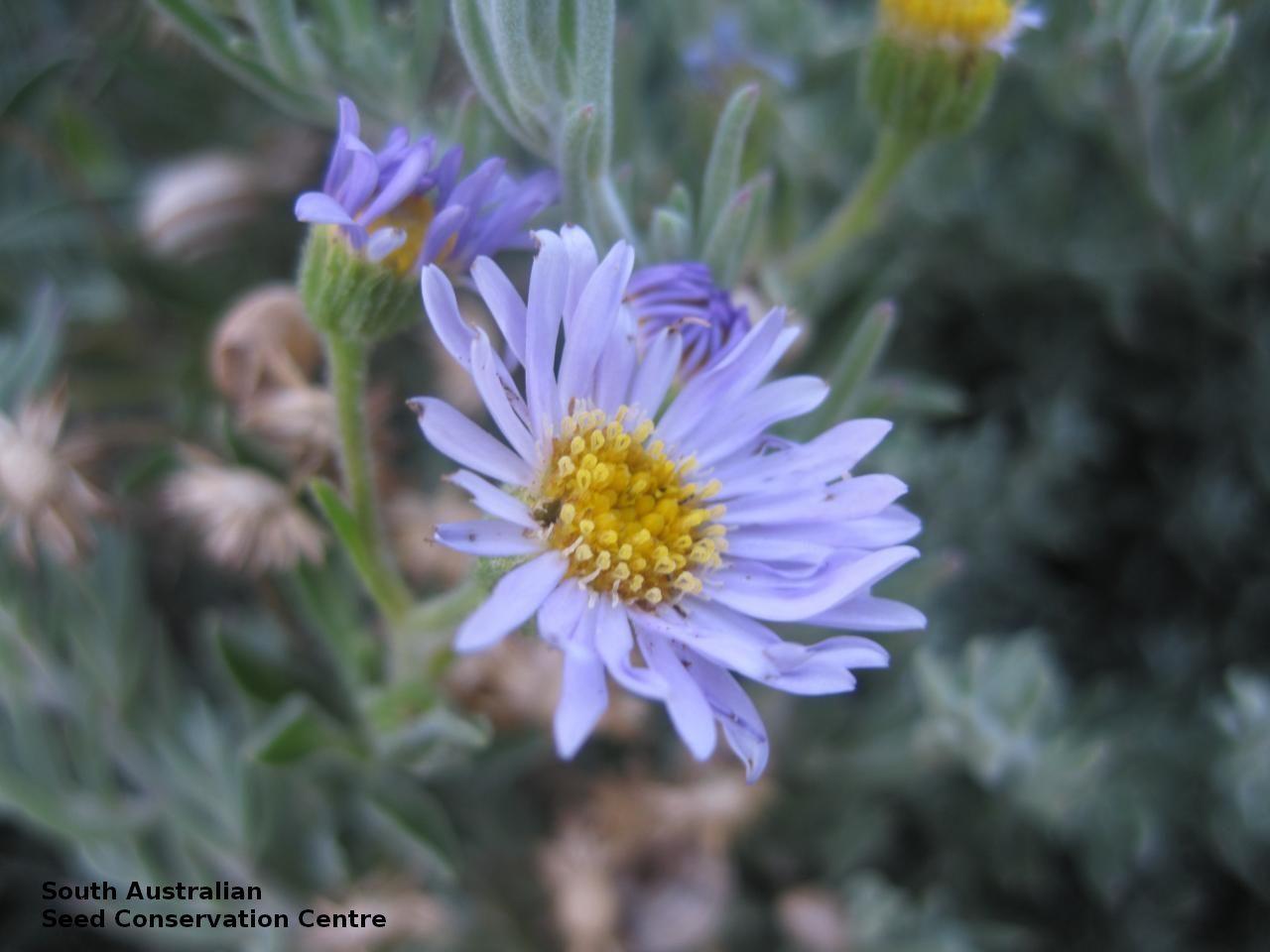
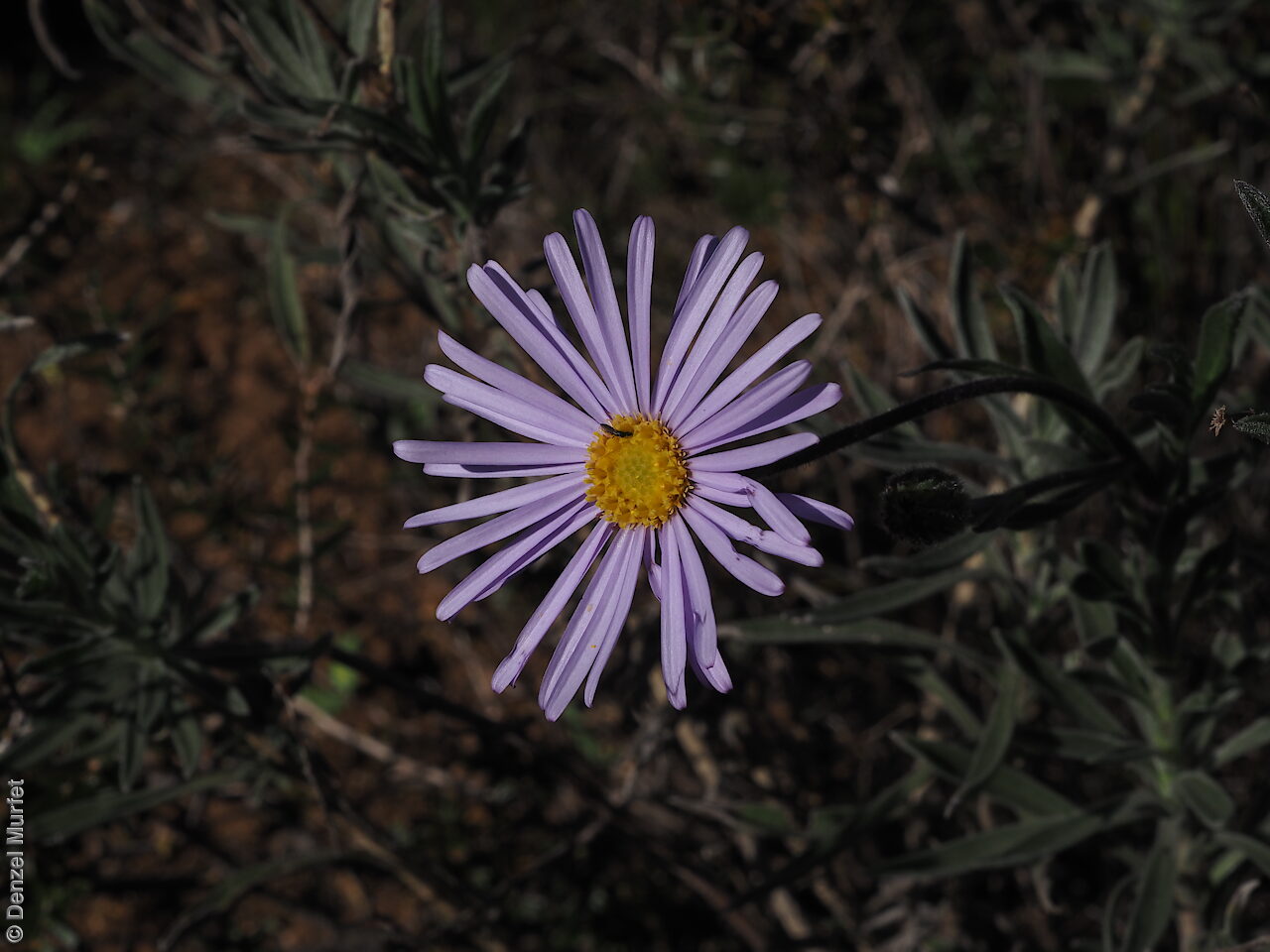
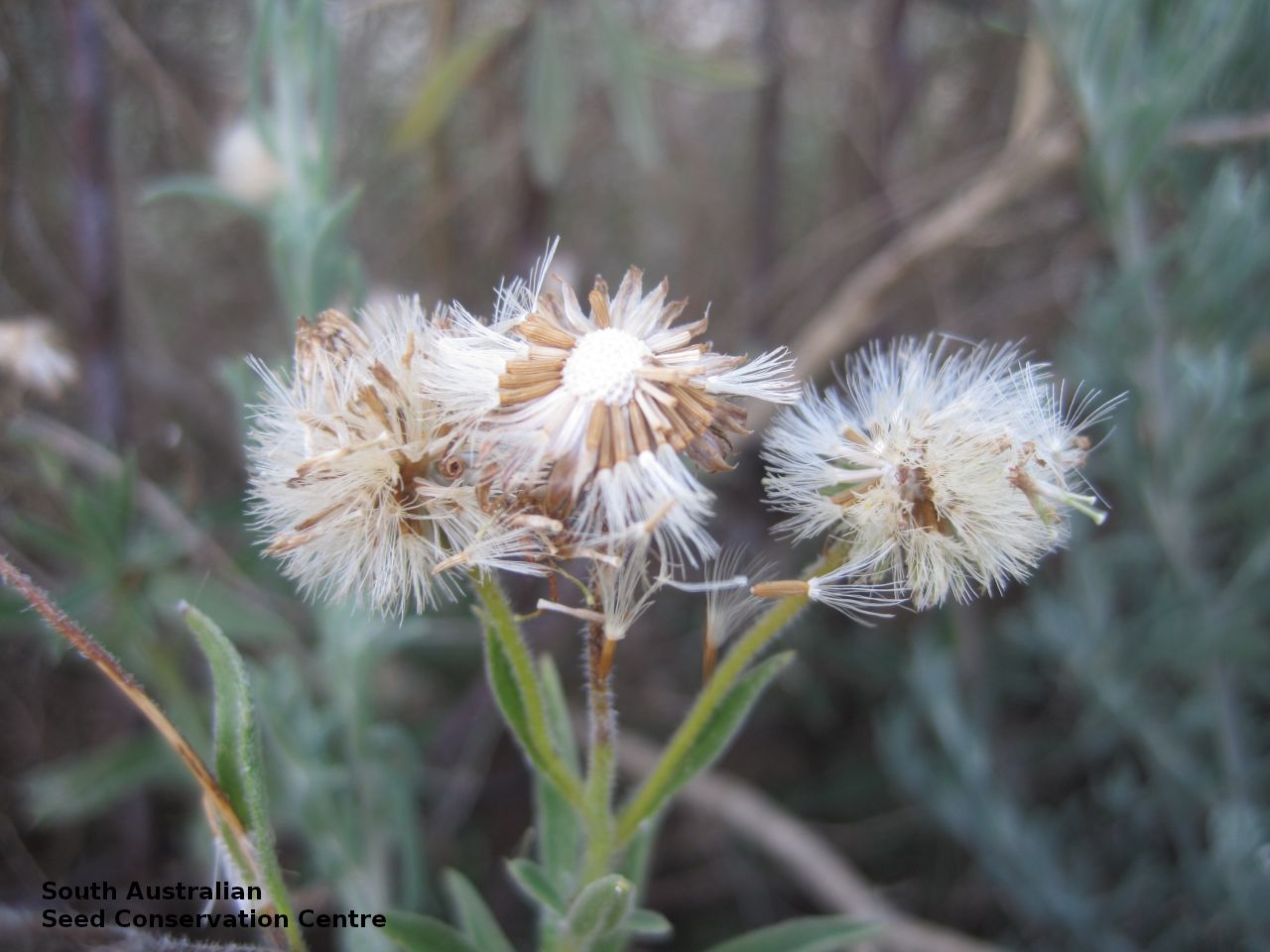
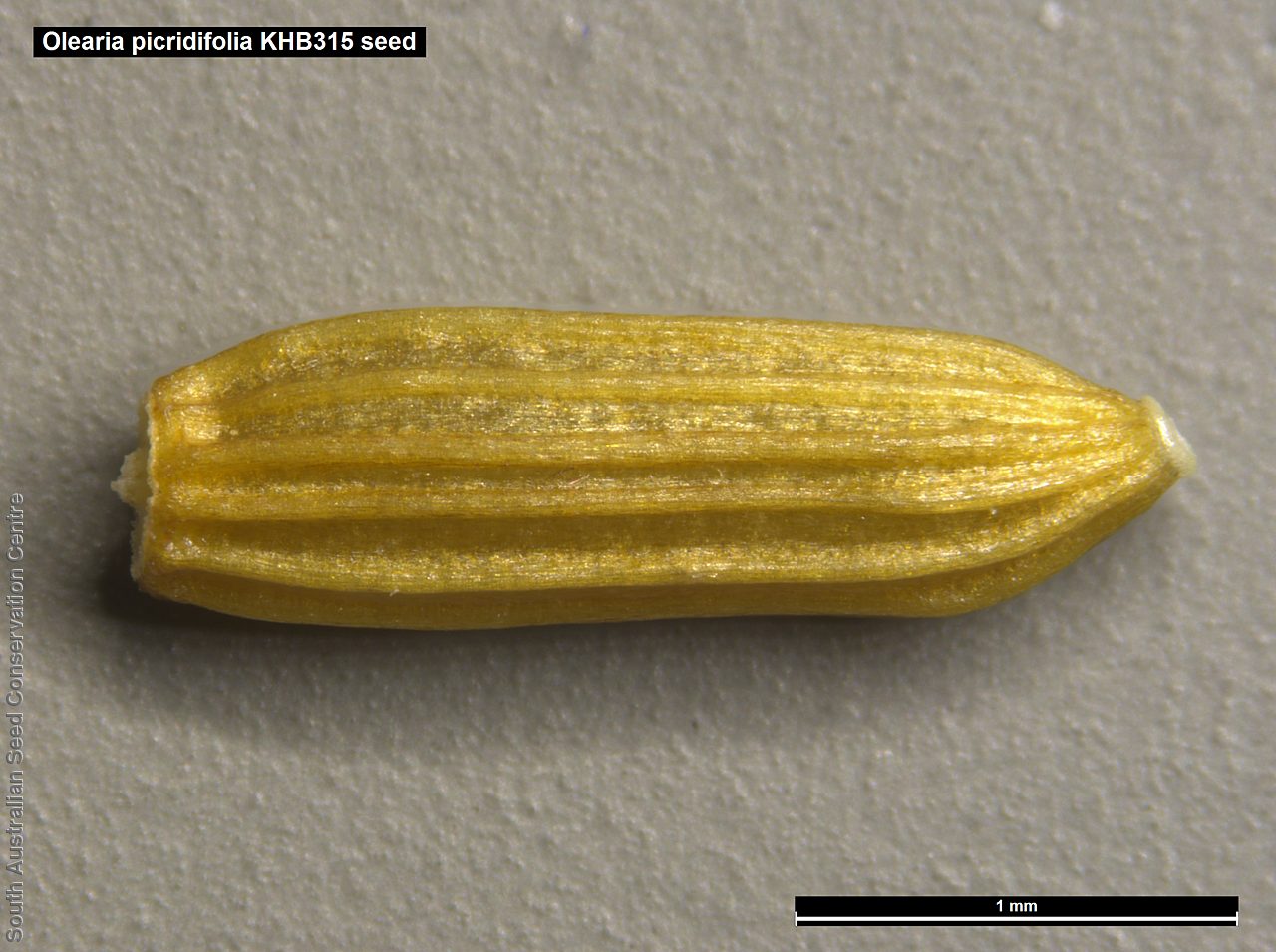
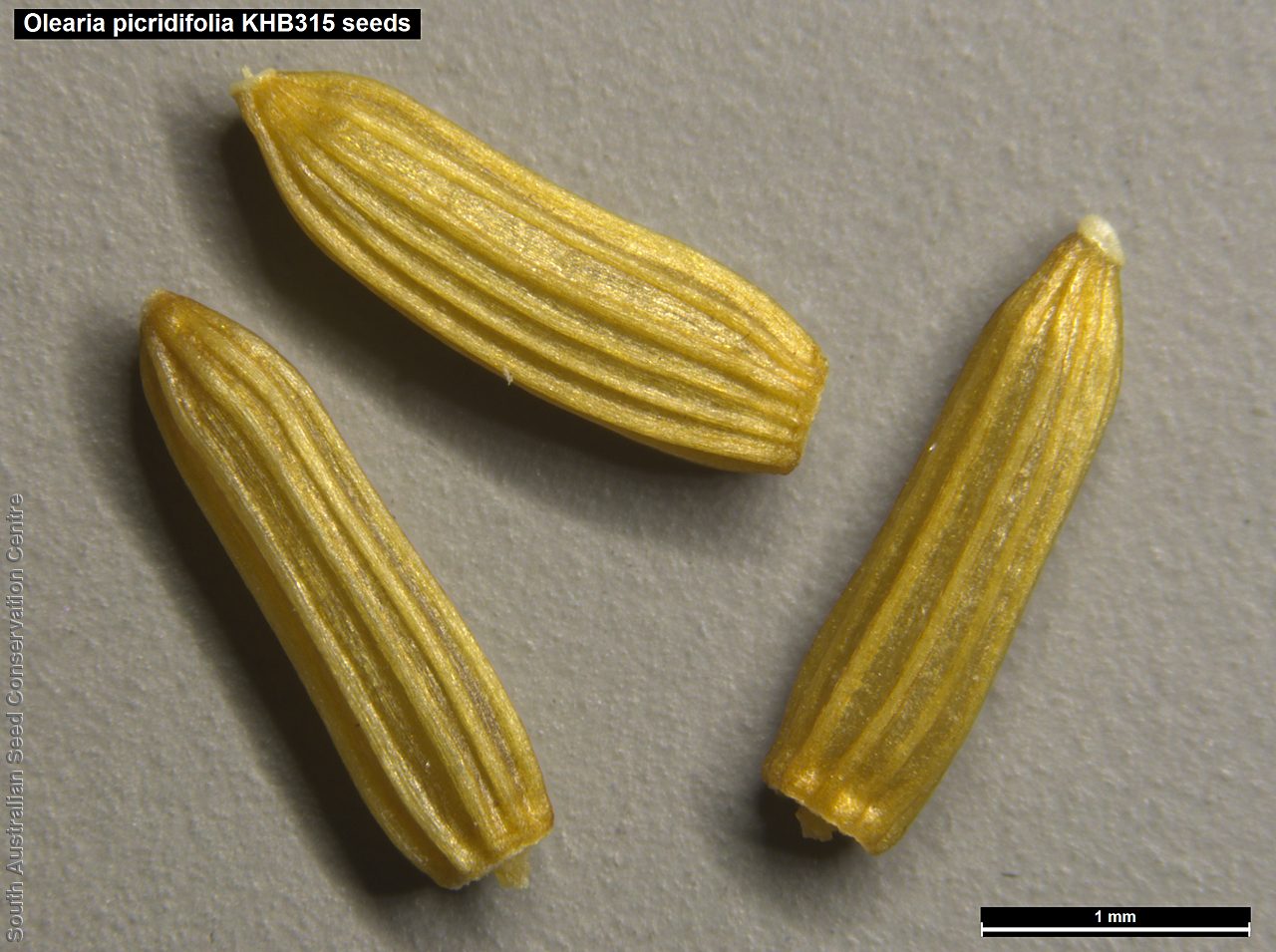
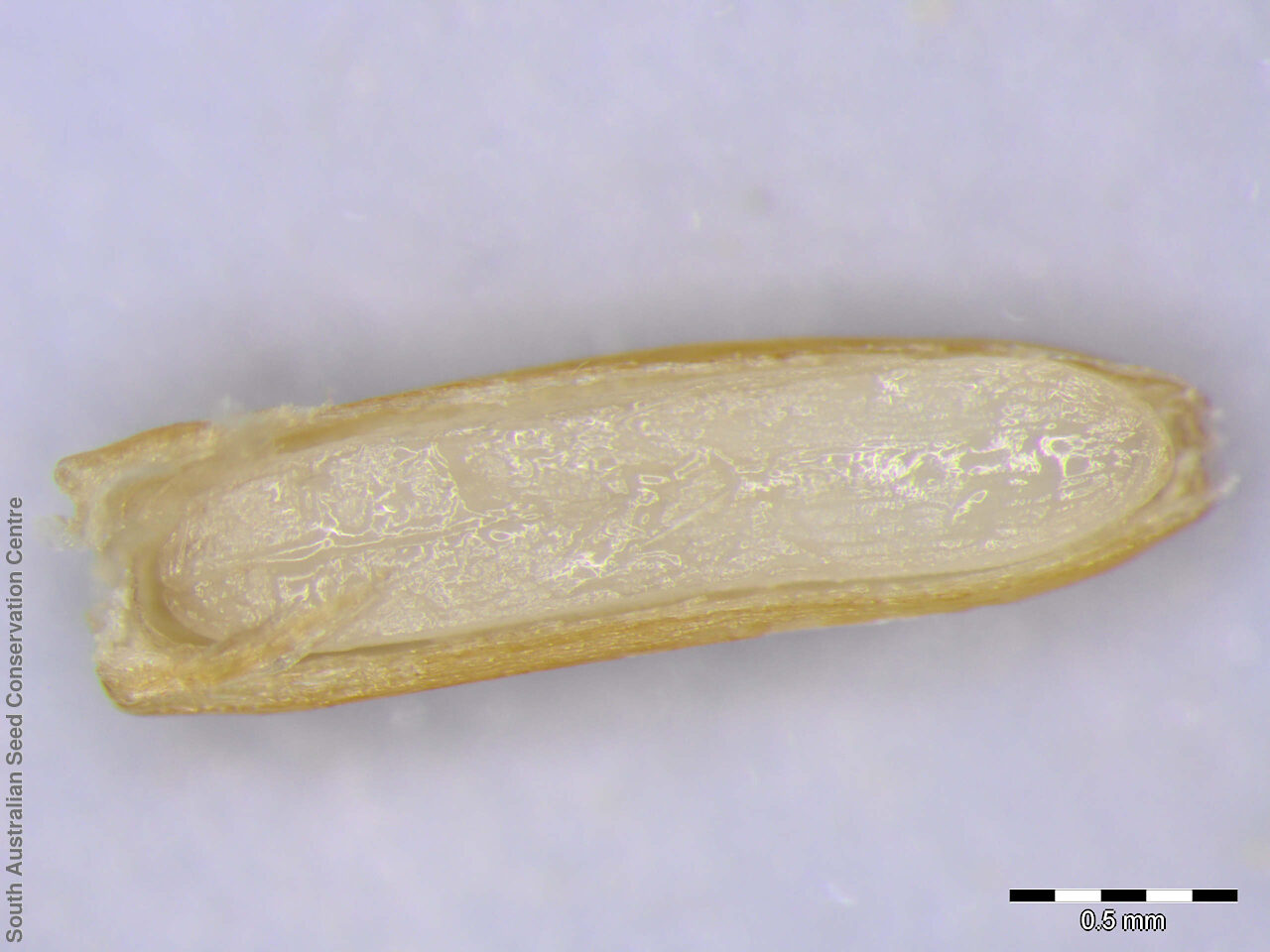
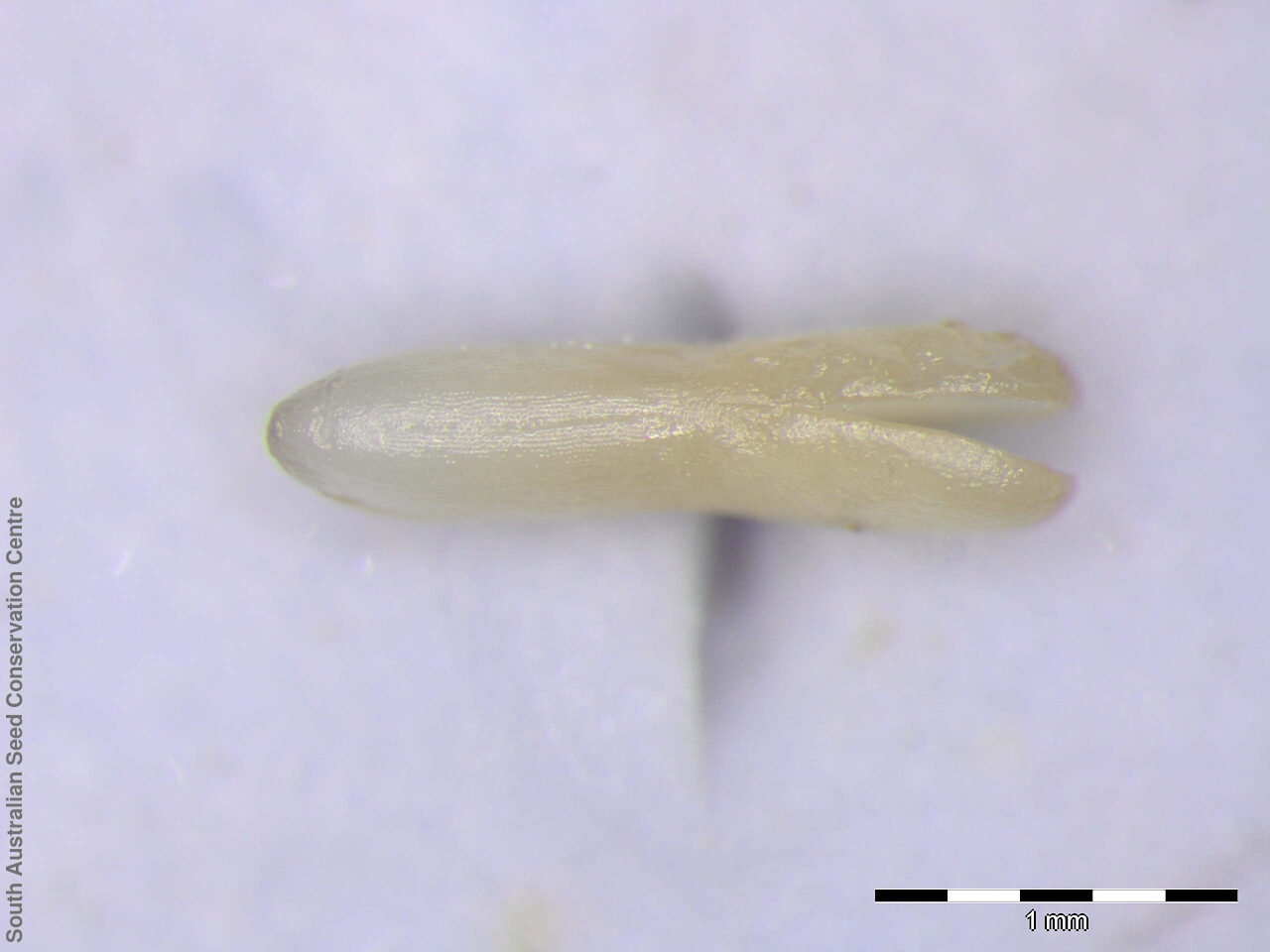

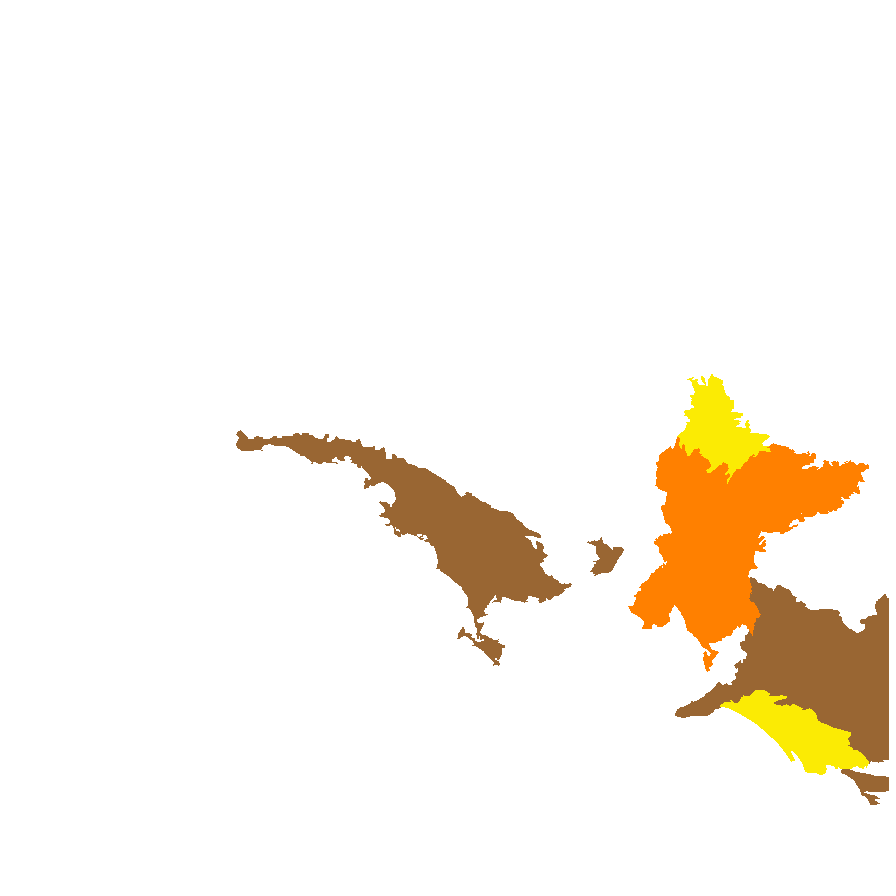
Botanical art
Prior names
Eurybia picridifolia
Etymology
Olearia named after Johann Gottfried lschlger (1603-1671), 17th century German horticulturist and author of a flora of Halle in Germany (his name was latinized to Olearius). Alternatively, it maybe from the Latin 'olearius' pertaining to oil, from 'olea', for olive tree, alluding to the first named species resembling the olive. Picridifolia from Greek pikros' meaning bitter and 'folium' meaning leaf, referring to the similarity of its leaf to the Genus Picris (some species having a bitter taste).
Distribution and status
Found scattered in the southern part of South Australia from the upper Eyre Peninsula, Flinders Ranges, upper Yorke Peninsula, Mt. Lofty Ranges, Murray and the upper South-east, growing in mallee and heath on alkaline soils derived from limestone or dunes. Also found in Western Australia and Victoria. Native. Rare in South Australia. Rare in the other states.
Herbarium regions: Flinders Ranges, Eastern, Eyre Peninsula, Northern Lofty, Murray, Yorke Peninsula, Southern Lofty, South Eastern
NRM regions: Adelaide and Mount Lofty Ranges, Eyre Peninsula, Northern and Yorke, South Australian Arid Lands, South East
AVH map: SA distribution map (external link)
Plant description
Spreading shrub or undershrub up to 1 m high with branchlets and leaves covered in stiff appressed hairs. Leaves sessile, narrowly elliptic or narrowly egg-shaped with the narrower end towards the base, to 5 cm long and 8 mm wide, grey-green, densely hirsute, with a prominent mid-vein. Inflorescence solitary or in small groups with white to blue or violet daisy flowers. Flowering between June and October. Fruits are large fluffy daisy heads containing numerous seeds. Seeds are striate, pale brown, cylindrical achenes to 3 mm long, glabrous with pappus bristles to 5 mm long that fall off readily. Seed embryo type is spatulate fully developed.
Seed collection and propagation
Collect seeds between August to December. Collect heads that are large and fluffy. Either pick off the whole heads or use your finger and pull off the seeds from the head. Mature seeds will come off easily. Place the heads in a tray for a week to dry. No cleaning is required if only pure seeds are collected. If heads are collected, then rub the heads gently with your hands to dislodge the seeds. Viable seeds will be fat and hard. Store the seeds with a desiccant such as dried silica beads or dry rice, in an air tight container in a cool and dry place. Seed viability is variable depending on timing of collection and predation level. Seeds are non-dormant, viable seed should germinate readily.
| Location | No. of seeds (weight grams) | Number of plants | Date collected | Collection number Collection location | Date stored | % Viability | Storage temperature |
|---|---|---|---|---|---|---|---|
| MSB | 1,800 (0.57 g) | 3 | 30-Dec-2005 | KHB35 Flinders Ranges | |||
| MSB | 2,750 (1.18 g) | 15 | 13-Sep-2006 | TST28 Yorke Peninsula | |||
| BGA | 3,100 (1.38 g) | 15+ | 22-Nov-2009 | KHB315 Flinders Ranges | 1-Jun-2010 | 100% | +5°C, -18°C |
| BGA | 11,800 (4.780 g) | 50+ | 6-Nov-2022 | KHB1082 South Eastern | 20-Jun-2023 | 70% | -18°C, -80°C |
Number of plants: This is the number of plants from which the seeds were collected.
Collection location: The Herbarium of South Australia's region name.
% Viability: Percentage of filled healthy seeds determined by a cut test or x-ray.